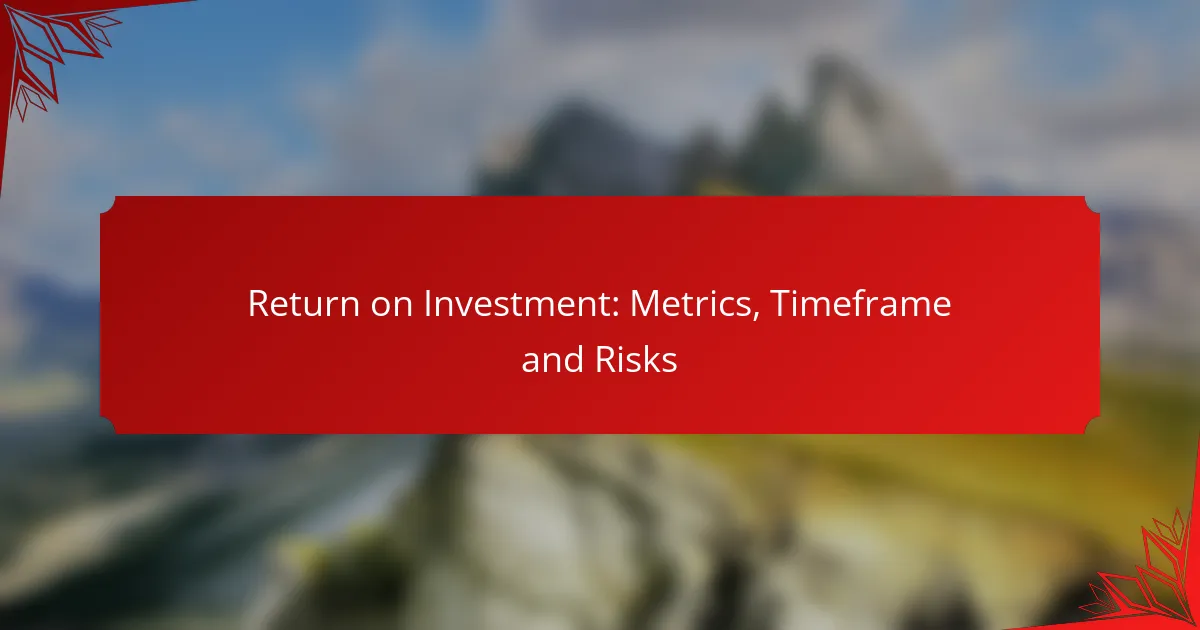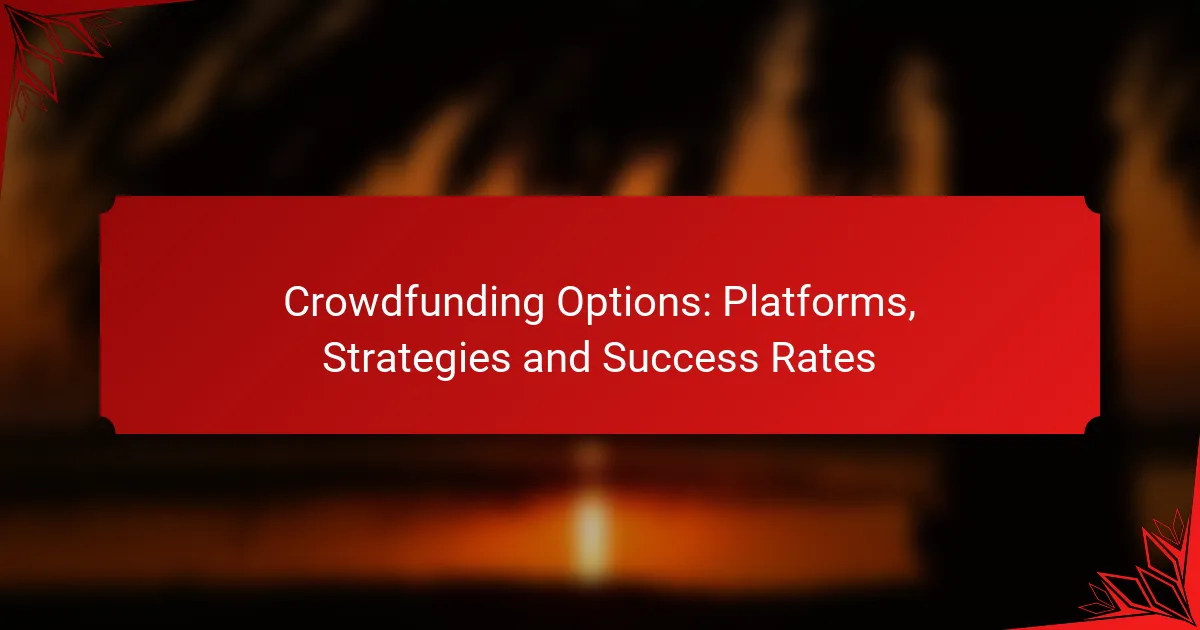Return on Investment (ROI) is a crucial financial metric that helps investors assess the profitability and viability of their investments. By analyzing key metrics such as Net Present Value (NPV) and Internal Rate of Return (IRR), stakeholders can make informed decisions based on expected timeframes and associated risks. Understanding these elements is essential for navigating the complexities of investment performance and maximizing returns.

What are the key metrics for measuring Return on Investment?
The key metrics for measuring Return on Investment (ROI) include Net Present Value (NPV), Internal Rate of Return (IRR), Payback Period, ROI Ratio, and Profitability Index. Each metric provides unique insights into the financial performance and viability of an investment, helping stakeholders make informed decisions.
Net Present Value (NPV)
Net Present Value (NPV) calculates the difference between the present value of cash inflows and outflows over a specific period. A positive NPV indicates that the projected earnings exceed the anticipated costs, making the investment potentially worthwhile.
To compute NPV, discount future cash flows back to their present value using a chosen discount rate, often reflecting the cost of capital. For example, if an investment requires an initial outlay of $100,000 and is expected to generate $120,000 over five years, the NPV can help determine if the investment is sound based on the discount rate applied.
Internal Rate of Return (IRR)
The Internal Rate of Return (IRR) is the discount rate that makes the NPV of an investment equal to zero. It represents the expected annualized rate of return over the investment’s life. A higher IRR suggests a more attractive investment opportunity.
When evaluating IRR, compare it to the required rate of return or the cost of capital. If the IRR exceeds these benchmarks, the investment is generally considered favorable. For instance, an IRR of 15% on a project with a 10% cost of capital would be appealing.
Payback Period
The Payback Period measures the time it takes for an investment to generate enough cash flow to recover its initial cost. This metric is straightforward and helps investors understand liquidity risk.
To calculate the Payback Period, divide the initial investment by the annual cash inflow. For example, if a project costs $50,000 and generates $10,000 annually, the payback period would be five years. However, this metric does not account for cash flows beyond the payback period, which can be a limitation.
Return on Investment (ROI) Ratio
The Return on Investment (ROI) Ratio evaluates the efficiency of an investment by comparing the net profit to the initial cost. It is expressed as a percentage and is a critical metric for assessing profitability.
To calculate ROI, use the formula: (Net Profit / Cost of Investment) x 100. For example, if an investment of $20,000 yields a profit of $5,000, the ROI would be 25%. A higher ROI indicates a more profitable investment.
Profitability Index
The Profitability Index (PI) is a ratio that compares the present value of future cash flows to the initial investment. A PI greater than 1 indicates that the investment is expected to generate more value than it costs.
To calculate the Profitability Index, divide the present value of cash inflows by the initial investment. For instance, if the present value of cash inflows is $150,000 for a $100,000 investment, the PI would be 1.5, suggesting a favorable investment opportunity. This metric can help prioritize projects when capital is limited.

How long does it take to see a Return on Investment?
The time to see a Return on Investment (ROI) can vary significantly based on the type of investment and market conditions. Generally, investors can expect to see returns within a few months to several years, depending on the strategy and asset class involved.
Short-term ROI (1-3 years)
Short-term ROI typically refers to investments that yield returns within one to three years. This timeframe is common for stocks, bonds, or real estate flips where market conditions can quickly influence value. Investors should focus on liquid assets and consider market trends to maximize returns.
Examples of short-term investments include high-yield savings accounts or certificates of deposit (CDs), which may offer modest returns but with lower risk. Generally, short-term ROI can range from low single digits to high teens in percentage terms, depending on the asset class and market volatility.
Medium-term ROI (3-5 years)
Medium-term ROI spans three to five years and often involves a balance of risk and reward. This period allows for more strategic investments, such as mutual funds or diversified portfolios, which can ride out market fluctuations. Investors should evaluate their risk tolerance and asset allocation during this timeframe.
Common medium-term investments include real estate properties held for rental income or growth stocks. Expected returns can vary widely, typically ranging from 5% to 15%, influenced by economic conditions and sector performance.
Long-term ROI (5+ years)
Long-term ROI focuses on investments held for five years or more, allowing for significant growth potential. This strategy often includes retirement accounts, index funds, or real estate investments that appreciate over time. Compounding interest plays a crucial role in maximizing returns in this category.
Investors should be prepared for market fluctuations and maintain a diversified portfolio to mitigate risks. Long-term investments can yield returns from 7% to 20% or more, depending on market conditions and the specific investment strategy employed.

What risks are associated with calculating Return on Investment?
Calculating Return on Investment (ROI) involves several risks that can significantly impact the accuracy of the results. These risks stem from market conditions, operational factors, regulatory environments, and the assumptions made during the calculation process.
Market Volatility
Market volatility refers to the fluctuations in asset prices that can affect ROI calculations. High volatility can lead to unpredictable returns, making it challenging to estimate future performance accurately. Investors should consider using historical data and scenario analysis to gauge potential impacts on ROI.
To mitigate risks from market volatility, it is advisable to diversify investments across different sectors and asset classes. This strategy can help cushion against sudden market downturns and stabilize overall returns.
Operational Risks
Operational risks arise from internal processes, systems, or human errors that can affect the execution of investment strategies. These risks can lead to unexpected costs or losses, ultimately skewing ROI figures. Regular audits and process improvements can help identify and minimize these risks.
Implementing robust operational controls and training staff can significantly reduce the likelihood of errors. Companies should also consider contingency plans to address potential operational disruptions that could impact financial performance.
Regulatory Changes
Regulatory changes can have a profound effect on ROI calculations, particularly in heavily regulated industries. New laws or amendments can alter the cost structure or market dynamics, affecting profitability. Staying informed about relevant regulations is crucial for accurate ROI assessments.
Investors should regularly review compliance requirements and engage with legal experts to understand potential impacts on their investments. This proactive approach can help in adjusting strategies in response to regulatory shifts.
Assumption Errors
Assumption errors occur when the underlying premises of the ROI calculation are flawed or overly optimistic. These errors can lead to inflated expectations and misguided investment decisions. It is essential to base assumptions on realistic data and market conditions.
To avoid assumption errors, conduct sensitivity analyses to understand how changes in key variables impact ROI. This practice can help identify potential risks and prepare for various scenarios, leading to more informed decision-making.

What factors influence the timeframe for ROI?
The timeframe for return on investment (ROI) is influenced by several key factors, including the type of industry, the size of the investment, and prevailing market conditions. Understanding these elements can help investors set realistic expectations and make informed decisions.
Industry Type
Different industries have varying norms for ROI timeframes. For instance, technology and software sectors may see returns in a few months, while real estate investments typically require several years to mature. Knowing the average ROI period for your specific industry can guide your investment strategy.
Consider sectors like healthcare, where regulatory approvals can delay returns, versus retail, which may offer quicker turnover. Researching industry benchmarks can provide valuable insights into expected timelines.
Investment Size
The size of your investment can significantly affect how quickly you see returns. Smaller investments may yield faster returns due to lower overhead and quicker decision-making processes. Conversely, larger investments often require more time to generate substantial returns due to increased complexity and longer project timelines.
As a rule of thumb, smaller investments under $10,000 might show returns within a year, while larger investments exceeding $100,000 could take several years. Assessing your financial capacity and risk tolerance is crucial in determining the appropriate investment size.
Market Conditions
Market conditions play a critical role in determining ROI timeframes. Economic factors such as inflation rates, interest rates, and overall market stability can either accelerate or delay returns. For example, a booming economy may lead to quicker returns, while a recession can extend the timeframe significantly.
Investors should stay informed about market trends and economic indicators. Utilizing tools like market analysis reports can help anticipate changes that may impact ROI timelines. Additionally, diversifying investments can mitigate risks associated with unfavorable market conditions.

How to choose the right metrics for your business?
Selecting the right metrics for your business involves identifying key performance indicators (KPIs) that align with your goals. Focus on metrics that provide actionable insights and reflect the financial health and operational efficiency of your organization.
Identify your business goals
Understanding your business goals is crucial when choosing metrics. Whether you’re aiming for growth, profitability, or customer satisfaction, each objective requires different KPIs. For example, if your goal is to increase sales, metrics like revenue growth rate and customer acquisition cost would be essential.
Consider setting SMART goals—Specific, Measurable, Achievable, Relevant, and Time-bound. This framework helps ensure that your chosen metrics will effectively track progress and inform decision-making.
Focus on leading vs. lagging indicators
Leading indicators predict future performance, while lagging indicators reflect past results. For instance, customer engagement metrics can be leading indicators of future sales, while revenue figures are lagging indicators. Balancing both types of metrics provides a comprehensive view of your business’s health.
Prioritize leading indicators to proactively address issues before they impact your bottom line. This approach allows for timely adjustments to strategies and operations, enhancing overall performance.
Consider industry benchmarks
Using industry benchmarks helps contextualize your metrics and assess performance relative to competitors. Research common KPIs in your sector, such as average profit margins or customer retention rates, to set realistic targets.
Regularly compare your metrics against these benchmarks to identify areas for improvement. This practice can highlight strengths and weaknesses, guiding strategic decisions and resource allocation.
Regularly review and adjust metrics
Metrics should not be static; regularly reviewing and adjusting them is vital for relevance. As your business evolves, so too should your KPIs. Schedule periodic assessments to ensure your metrics continue to align with your goals and market conditions.
Be cautious of overcomplicating your metrics. Focus on a manageable number of KPIs that provide clear insights rather than overwhelming yourself with data. Aim for a balance that allows for effective monitoring without sacrificing clarity.



